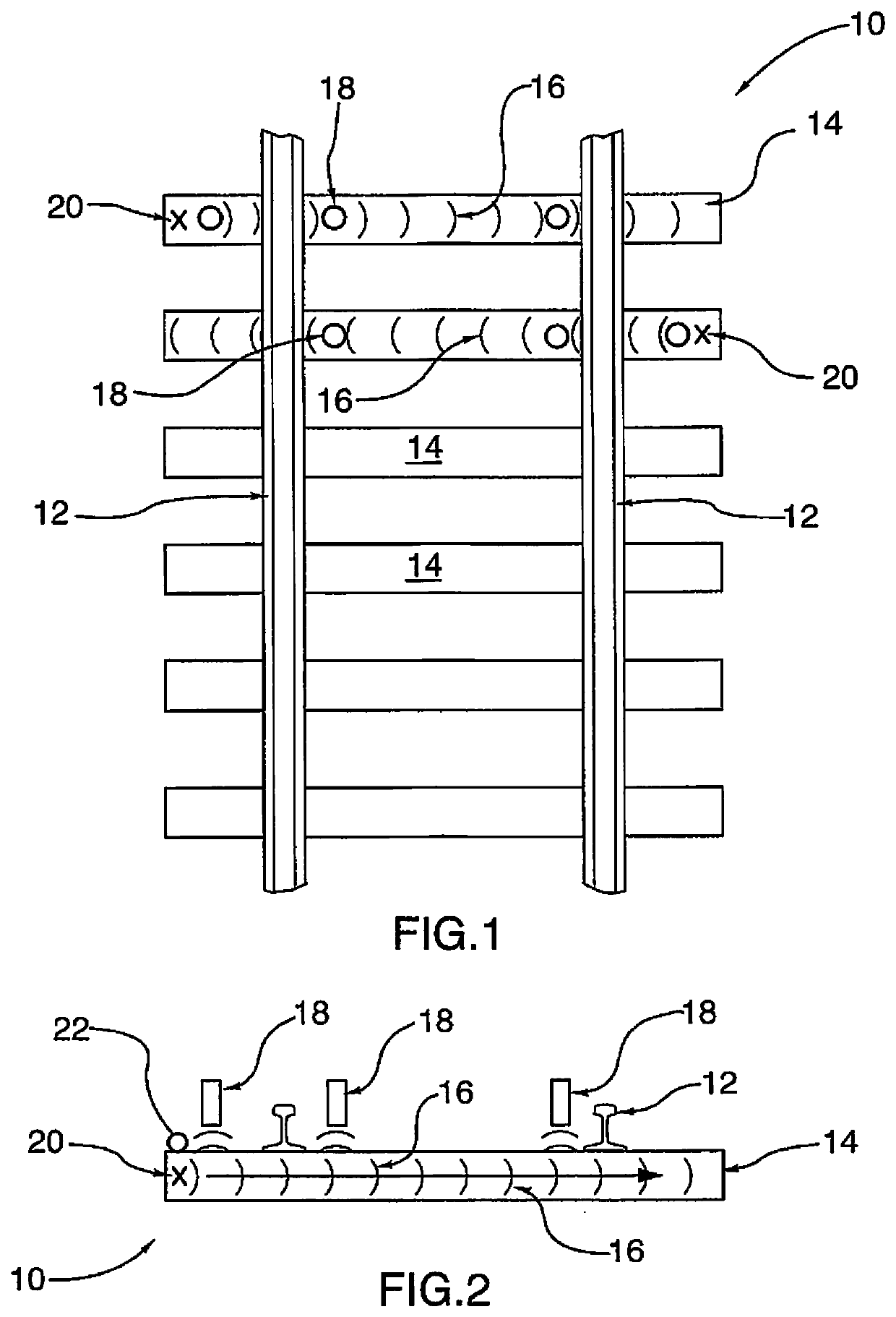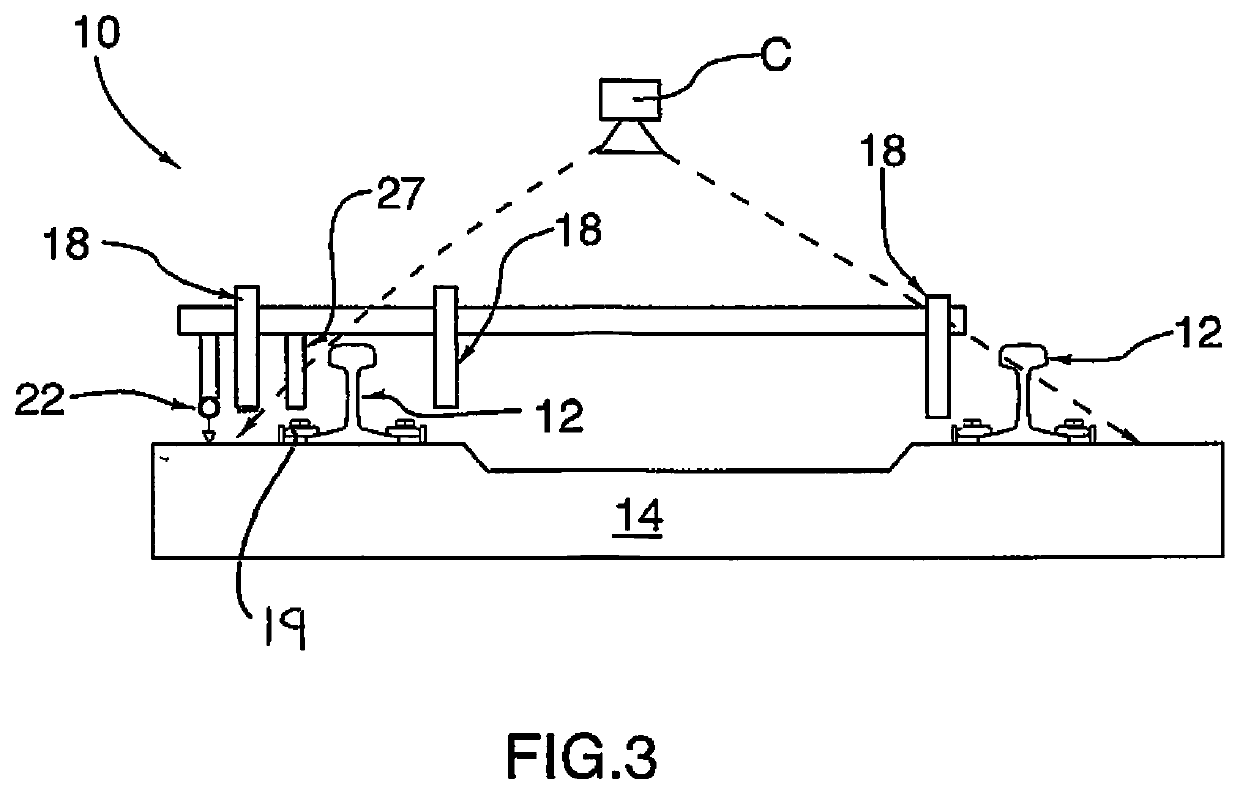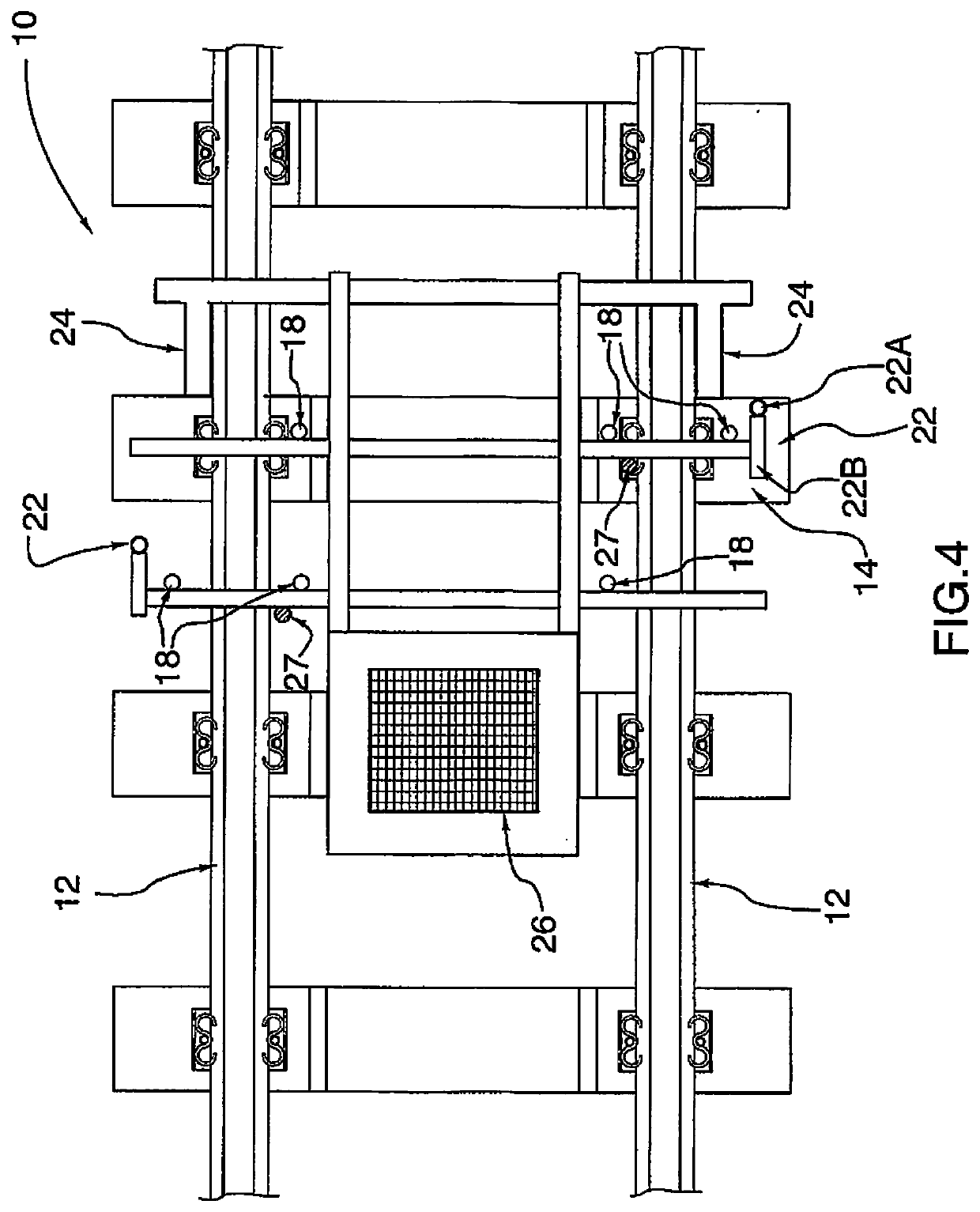Evaluating Railway Ties
a technology for railway ties and cross-ties, applied in the direction of material strength using single impulsive force, measurement devices, instruments, etc., can solve the problems of railroads' deteriorating concrete and wooden ties, and the pattern of cracking along the sides of cross-ties and within the cross-ties has advanced significantly, so as to improve signal quality and reduce noise. , the effect of reducing nois
- Summary
- Abstract
- Description
- Claims
- Application Information
AI Technical Summary
Benefits of technology
Problems solved by technology
Method used
Image
Examples
Embodiment Construction
[0103]One example of a concrete testing system can be seen in the conceptual illustrations of FIGS. 1 (top view) and 2 (front view). In both figures a concrete testing system 10 may be moved upon railroad tracks 12 to evaluate the concrete railroad ties 14 to which they are secured. Waves which are typically Rayleigh but include compressional pressure waves 16 are propagated along and through the railroad tie 14. Sensing devices 18, such as microphones, detect the air pressure waves that emanate from the tie 14 due to movement of the surface of the ties due to the waves 16 within the structure.
[0104]The pressure waves 16 are generated at contact point 20 at one end of a concrete railroad tie 14 and propagate through the tie 14 from one end to the other. The sensing devices 18 are located along the length of the tie 14 to detect the pressure waves 16, allowing an assessment of the degree of cracking / concrete deterioration of the concrete tie 14.
[0105]FIG. 2 shows the location of the ...
PUM
| Property | Measurement | Unit |
|---|---|---|
| energy | aaaaa | aaaaa |
| frequencies | aaaaa | aaaaa |
| frequencies | aaaaa | aaaaa |
Abstract
Description
Claims
Application Information
 Login to View More
Login to View More - R&D
- Intellectual Property
- Life Sciences
- Materials
- Tech Scout
- Unparalleled Data Quality
- Higher Quality Content
- 60% Fewer Hallucinations
Browse by: Latest US Patents, China's latest patents, Technical Efficacy Thesaurus, Application Domain, Technology Topic, Popular Technical Reports.
© 2025 PatSnap. All rights reserved.Legal|Privacy policy|Modern Slavery Act Transparency Statement|Sitemap|About US| Contact US: help@patsnap.com



